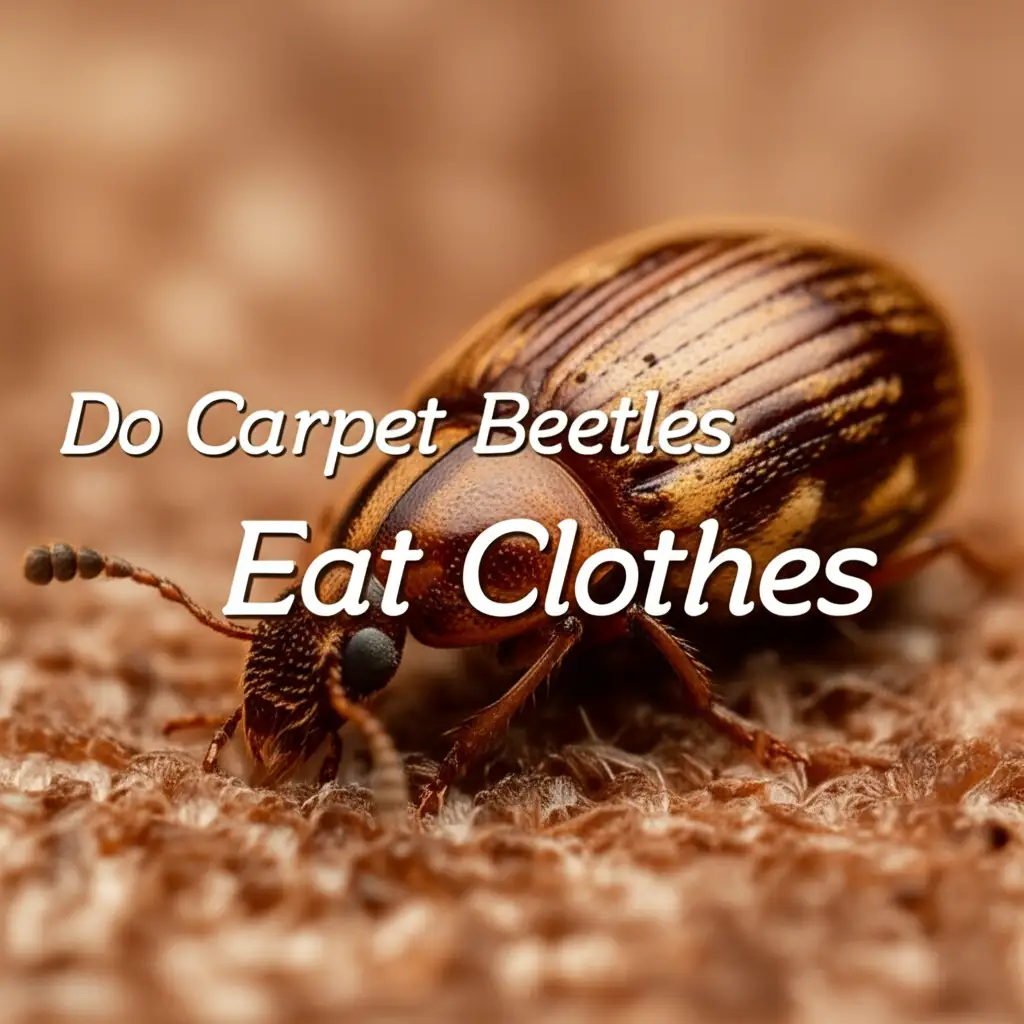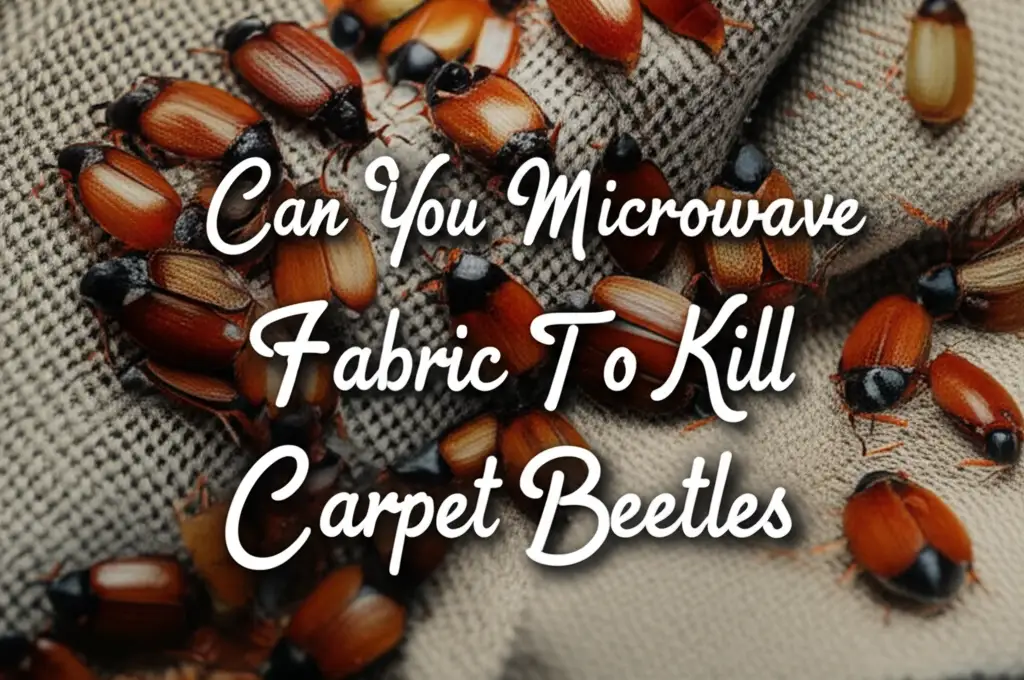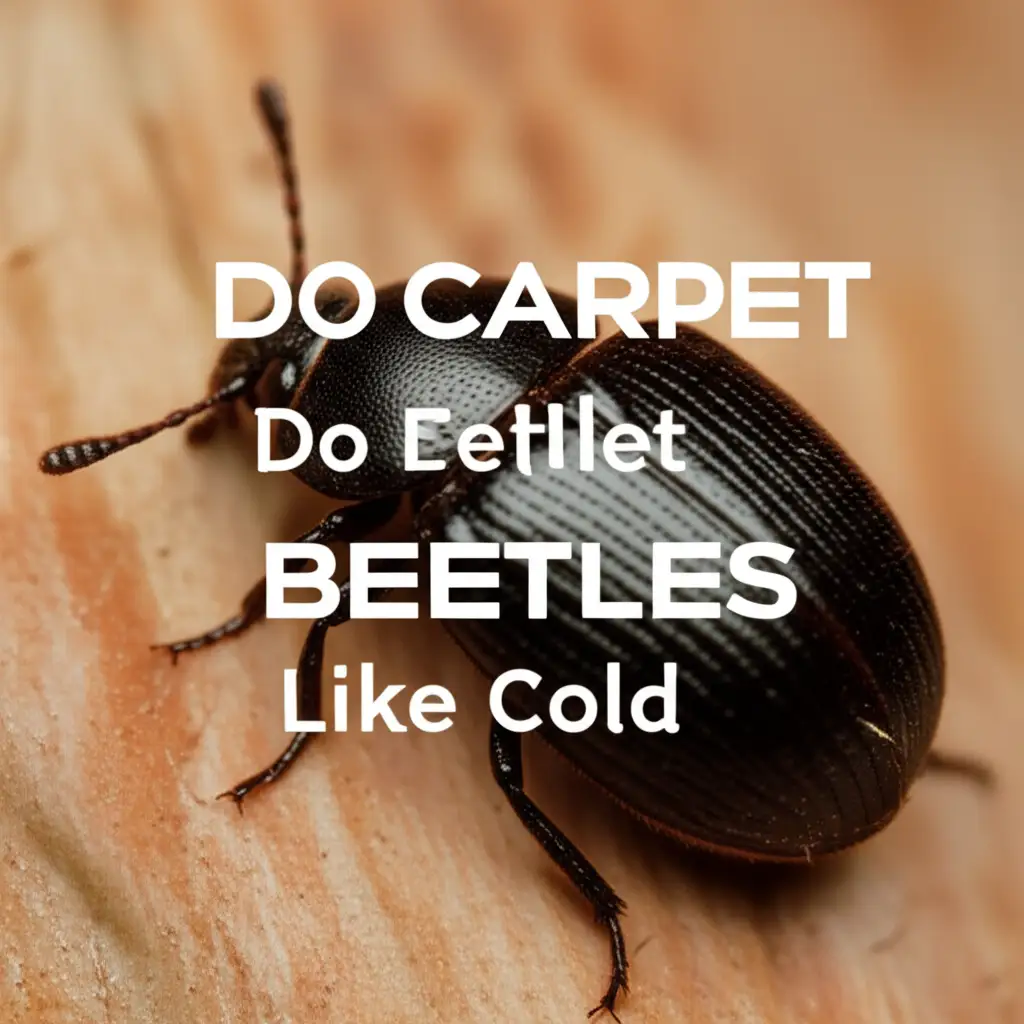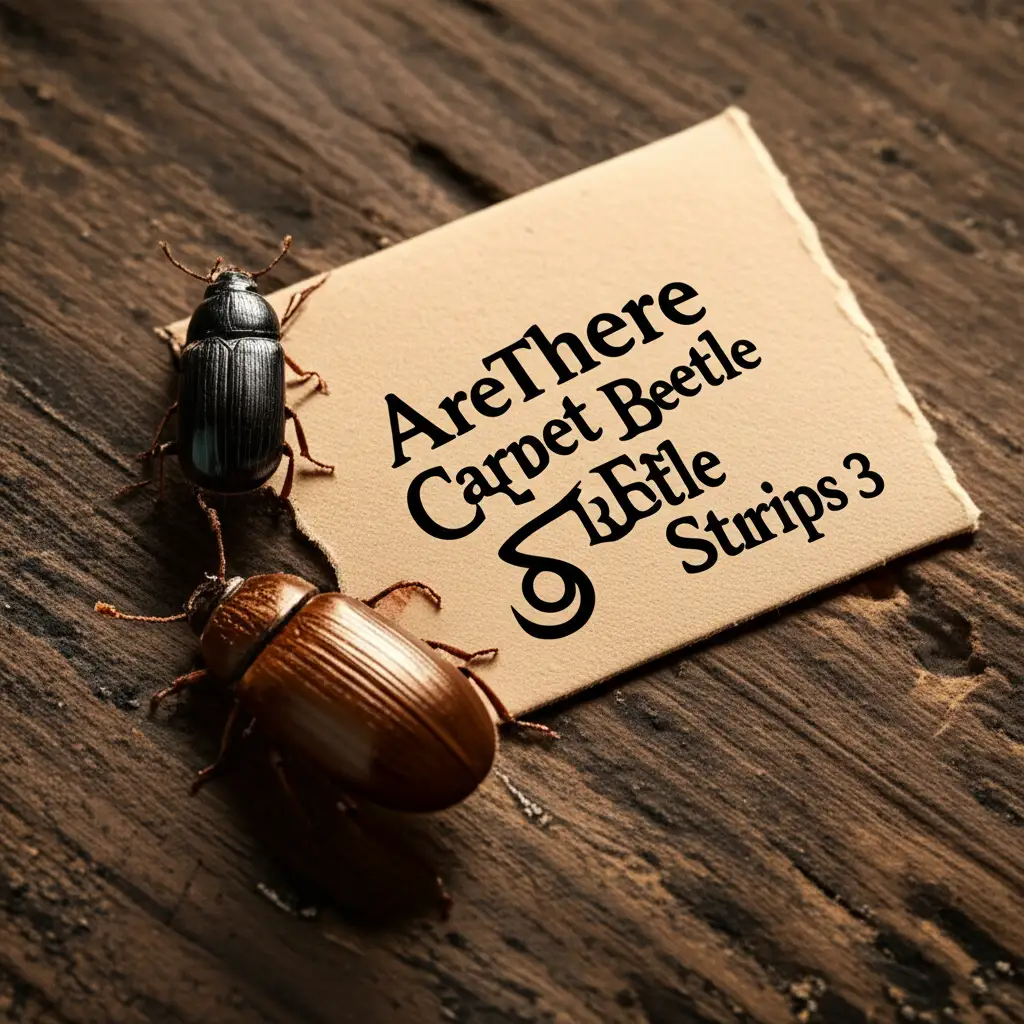· Elira Thomsen · Pest Control · 13 min read
Why Do We Get Carpet Beetles
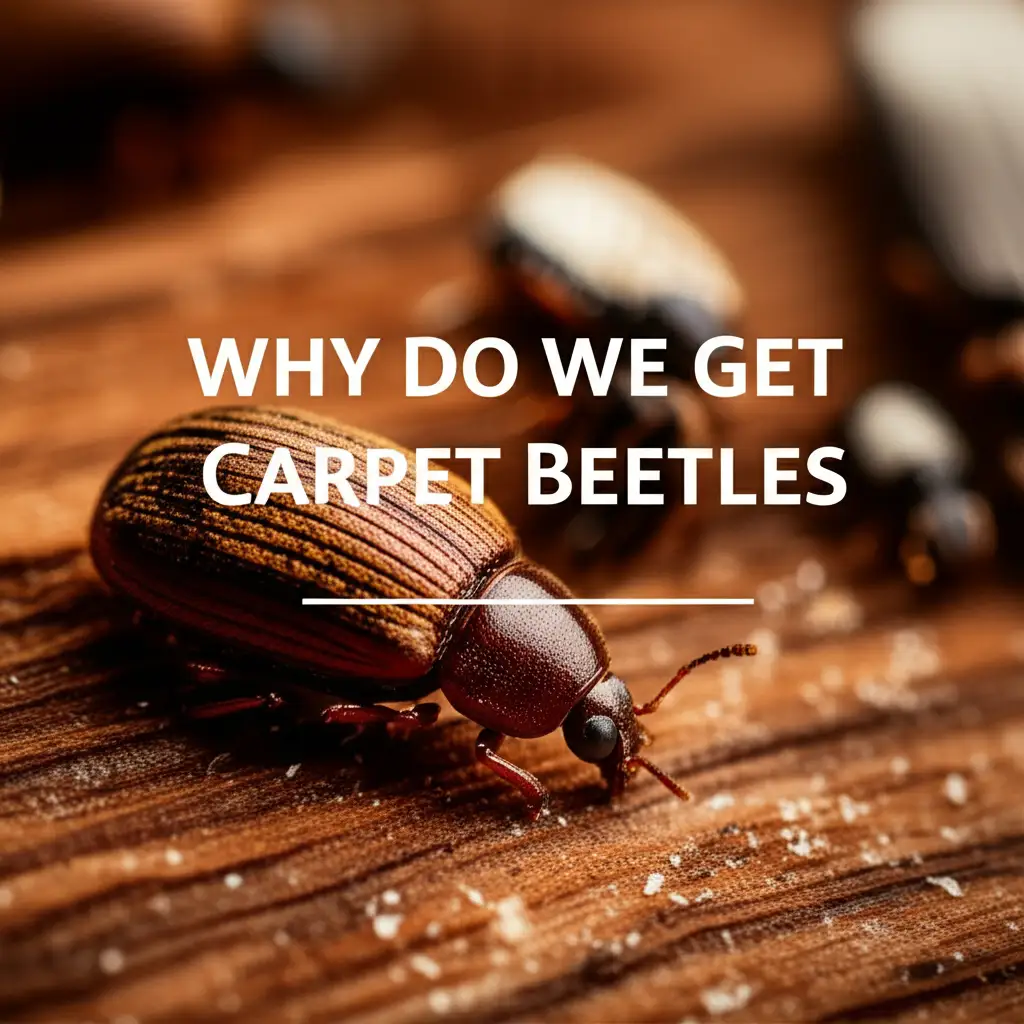
Understanding Why We Get Carpet Beetles: A Comprehensive Guide
Imagine you pull out a treasured wool sweater or lift a rug, only to find tiny, fuzzy insects crawling or small holes appearing. This common problem often means you have carpet beetles. These little invaders can cause big headaches for homeowners. Many people wonder, “Why do we get carpet beetles?” They seem to appear out of nowhere.
Carpet beetles are not just a nuisance; they are destructive pests. Their larvae feed on natural fibers, dry food, and animal products. This means your carpets, clothes, and stored pantry items are all at risk. Understanding their presence helps us control them. We will explore what attracts these beetles to our homes. We will also look at how they get inside. This article provides clear answers and practical steps. You will learn how to protect your home from these unwanted guests.
Takeaway:
- Carpet beetles seek out specific food sources like natural fibers and crumbs.
- They enter homes through small openings or on infested items.
- Regular cleaning and proper storage are key to prevention.
Why do we get carpet beetles?
We get carpet beetles because our homes offer them ideal food sources like natural fibers (wool, silk), pet hair, lint, and food crumbs. They enter through small cracks, open doors/windows, or are unknowingly carried inside on plants, furniture, or cut flowers, seeking sheltered places to lay eggs and feed.
Carpet Beetles: Understanding Their Dietary Preferences
Carpet beetles enter our homes mostly because they are looking for food. These pests, specifically their larvae, have a unique diet. They prefer organic materials found commonly in homes. This includes a wide range of natural fibers. Wool carpets, silk clothing, and leather goods are all potential meals.
Their larvae also like other animal-derived products. This means things like pet hair, feathers, and dead insects become food. Dust bunnies often contain a mix of these materials. This makes dust a prime breeding ground for them. Even dried food spills or crumbs can attract them. This is why keeping a clean home is so important. If you do not remove these food sources, you invite them in.
The adult carpet beetles do not eat fabrics. They prefer pollen and nectar from outdoor plants. However, the adults lay eggs inside your home. These eggs hatch into the destructive larvae. This life cycle explains why seeing adult beetles means a potential problem. They are often just looking for a good place to start a new family.
Understanding what they eat helps us prevent them. We can reduce their food supply in our living spaces. This makes our homes less appealing to them. A clean environment means less for them to consume. This simple fact guides our prevention efforts.
How Carpet Beetles Enter Your Home: Common Entry Points
Carpet beetles are small. Their size makes it easy for them to get inside our homes. They do not need large openings. Even tiny cracks can be an entry point. Many ways allow them to sneak in. Knowing these paths helps us block them.
One common way is through open doors and windows. Adult beetles fly. They fly towards light and enter if a window is open without a screen. Small gaps under doors can also be entry points. They just walk right in. Sometimes, we bring them inside ourselves. This happens when we carry in infested items. Things like used furniture or old rugs can harbor eggs or larvae. Even cut flowers from a garden can carry adult beetles.
They also get in through cracks in foundations or walls. Vents and utility pipes also offer small openings. Birds’ nests near your home can be a source. Carpet beetles feed on feathers and nesting materials. If a nest is close, beetles can migrate inside your attic or walls. They then find their way into living areas. Old attics or undisturbed storage areas are often where they begin. They multiply there before spreading.
Being aware of these entry methods is important. It helps us seal up our homes. We can prevent future infestations. Blocking their path is a key step.
Creating the Perfect Home: Ideal Conditions for Carpet Beetles
Carpet beetles thrive in specific environments. They look for places that offer safety and ample food. These conditions allow them to grow and multiply. Our homes often provide these ideal spots, sometimes without us knowing.
They prefer quiet, undisturbed areas. This means places where people do not frequently clean. Underneath furniture or heavy rugs are common spots. They also like dark closets or attics. These areas are usually left alone for long periods. This gives the larvae time to feed and develop. Old storage boxes filled with clothes are very attractive to them. These items sit untouched, providing a continuous food source.
Carpet beetles also like moderate temperatures. They do not like extreme cold or heat. This is why they seek shelter indoors. Your home’s consistent temperature is perfect for them. They will try to find spots away from direct sunlight. This provides a stable environment for their life cycle. A constant temperature means they can breed year-round. This leads to bigger problems over time.
Additionally, they seek out places with high humidity. This helps them stay hydrated. Areas near bathrooms or basements can be appealing. However, simply having humidity is not enough. They need food sources present too. Combining food, warmth, darkness, and moisture creates their dream home. Preventing these conditions helps deter them. Discover if carpet beetles like cold weather here.
The Life Cycle of Carpet Beetles: Why Infestations Grow
Understanding the carpet beetle life cycle helps explain infestations. These insects go through several stages. Each stage plays a part in their presence in our homes. An infestation grows because they reproduce quickly. They also hide their offspring well.
It all begins with the egg. Adult female carpet beetles lay tiny, white eggs. They place these eggs on or near food sources. This means your carpet fibers, clothing, or dusty corners are prime locations. A single female can lay up to 100 eggs. These eggs hatch within a few days or weeks. This depends on temperature and humidity.
The next stage is the larva. This is the most destructive stage. Carpet beetle larvae are small, worm-like creatures. They are often brown or reddish-brown. They have bristly bodies. These larvae feed constantly. They chew through natural fibers. They grow larger over several months. During this time, they shed their skin multiple times. These shed skins are often a sign of an infestation. The larvae cause all the damage you see. They make holes in fabrics.
After several molts, the larva changes into a pupa. This is a resting stage. The pupa does not move or eat. It transforms into an adult beetle. This stage can last from a few days to several weeks. Finally, the adult beetle emerges. Adult beetles are oval-shaped and dark. They are often attracted to light. They may fly around windows. Their main goal is to reproduce and lay more eggs. This completes the cycle. A new generation of destructive larvae then begins. This continuous cycle leads to growing numbers. This is why infestations get bigger if left unchecked.
The Role of Home Hygiene: Attracting and Deterring Carpet Beetles
Home hygiene plays a huge part in getting or deterring carpet beetles. A clean home is less inviting to these pests. A messy or dusty home provides everything they need. It is like an open invitation for them to move in.
Dust, lint, and pet hair are major attractants. These materials often contain bits of natural fibers. They also hold dead skin cells, which carpet beetles eat. If you do not vacuum regularly, these materials build up. They create perfect feeding grounds. Crumbs from food spills also attract them. These small bits of food are easy for larvae to consume. They hide in cracks and under furniture. These are places we often miss during routine cleaning.
Storing items correctly also impacts their presence. Natural fiber clothing or blankets need proper storage. Place them in airtight containers. Do not leave them exposed in closets. Items like old furs or taxidermy can also attract them. These need careful inspection and storage. Regular washing of bedding and clothing also helps. Heat from washing machines can kill eggs and larvae.
Conversely, a clean home acts as a strong deterrent. Regular vacuuming removes their food sources. This includes dust, pet hair, and crumbs. Paying attention to hidden areas is crucial. Move furniture to vacuum underneath. Clean out closets and drawers often. This proactive approach denies them food and shelter. It breaks their life cycle. This helps you avoid an infestation. Learn more about how carpet cleaning works.
Seasonal Changes and Outdoor Influences on Carpet Beetles
Carpet beetle activity often changes with the seasons. Their behavior outside influences their presence inside our homes. Understanding these patterns helps us predict and prevent infestations.
In spring and early summer, adult carpet beetles are very active outdoors. They feed on the pollen and nectar of flowering plants. This is their breeding season. They are attracted to light and can fly. During this time, they may fly into your home. They come in through open windows or doors. This is often the first sign you see of their presence. You might find them on windowsills. These adults are looking for places to lay their eggs. They seek dark, protected spots with food sources. This seasonal influx of adults starts new indoor infestations.
During fall and winter, adult carpet beetles are less active outdoors. They often seek shelter. Your warm home becomes an appealing refuge. They can enter through small cracks or gaps. Once inside, they may hibernate or continue their life cycle in a slower pace. The larvae, however, are active year-round indoors. They continue to feed and grow. They are less affected by outdoor temperatures once established inside. This means damage can occur even in colder months.
External factors like bird nests or insect nests near your home can also be a source. Carpet beetles feed on materials in these nests. If these nests are close to entry points, beetles can migrate indoors. Removing old bird nests or sealing entry points helps. Being aware of their seasonal patterns helps in targeting prevention efforts. This makes your efforts more effective. Explore what carpet beetles dislike to help keep them away.
Proactive Steps: Preventing Carpet Beetle Infestations
Prevention is the best approach to carpet beetles. You can take many steps to make your home unappealing to them. This involves consistent effort and smart practices. You can significantly reduce your risk of an infestation.
Regular and thorough cleaning is your first line of defense. Vacuum carpets, rugs, and upholstery frequently. Pay close attention to edges, under furniture, and in closets. These are common hiding spots for larvae and eggs. Use a vacuum with strong suction. Dispose of the vacuum bag contents immediately outside. This prevents any hatched eggs from re-entering your home. Mop hard floors often to remove dust and crumbs.
Proper storage of items is also vital. Store natural fiber clothing, blankets, and rugs in airtight containers. Use plastic bins with tight-fitting lids. Cedar chests can offer some protection, but they are not foolproof. Wash or dry-clean items before storing them for long periods. This kills any existing eggs or larvae. Rotate stored items periodically. Inspect them for any signs of beetle activity.
Sealing entry points helps keep adult beetles out. Check screens on windows and doors. Repair any tears or holes. Seal cracks and crevices around windows, doors, and utility pipes. Use caulk or weatherstripping for this. Be mindful when bringing items indoors. Inspect used furniture, plants, or cut flowers before they enter your home. This helps catch hitchhiking beetles before they become a problem. These proactive steps work together. They create a strong barrier against carpet beetle invasions.
FAQ Section
Where do carpet beetles come from? Carpet beetles commonly come from outdoors, flying into homes from gardens where they feed on pollen. They also enter through cracks or open windows. Sometimes, they hitchhike indoors on infested items like used furniture, vintage clothing, or even cut flowers, bringing them directly into your living space.
How can I prevent carpet beetles from infesting my home? Preventing carpet beetles involves regular cleaning and smart storage. Vacuum frequently, especially under furniture and along baseboards. Store natural fiber items in airtight containers. Seal cracks in your home’s foundation and around windows. Inspect used items before bringing them inside.
Are carpet beetles harmful to humans or pets? Carpet beetles are not directly harmful to humans or pets. They do not bite or sting. However, their bristly larvae can cause skin irritation or allergic reactions in some sensitive individuals, leading to itchy rashes. They cause significant damage to fabrics and stored goods.
What do carpet beetle larvae eat? Carpet beetle larvae eat a variety of organic materials. Their diet includes natural fibers like wool, silk, and cotton. They also consume pet hair, lint, dust, feathers, furs, leather, and even dried food products such as cereals, pasta, or pet food.
How long do carpet beetles live? The carpet beetle life cycle varies depending on species and environmental conditions like temperature and food availability. The larval stage, which causes damage, can last from a few weeks to several years. Adult beetles usually live for several weeks to a few months, focusing on reproduction.
When are carpet beetles most active? Adult carpet beetles are most active in spring and early summer when they are seeking mates and food (pollen) outdoors. Larvae, however, are active year-round indoors as long as food sources and favorable temperatures are present, meaning damage can occur at any time.
Conclusion
Carpet beetles are common household pests. Their presence often stems from a few key factors. They seek specific food sources like natural fibers and various organic debris. Our homes provide ideal conditions for them. They also find easy ways to enter. Understanding these ‘whys’ is the first step in effective management. From outdoor attraction to indoor breeding, each part of their life contributes to an infestation.
I hope this article has shed light on why these tiny invaders show up. We learned about their diet, entry points, and preferred living conditions. We also covered their life cycle and the big role of home hygiene. Knowing these details puts you in control. It empowers you to act.
Preventing carpet beetles means being proactive. Regular, thorough cleaning removes their food and hiding spots. Proper storage protects your valuable items. Sealing entry points keeps them from coming inside. Stay vigilant with your home maintenance. Inspect items before bringing them indoors. By taking these steps, you create a less hospitable environment for these pests. Keep your home clean and tidy. You can keep your carpets and belongings safe from these destructive creatures.


